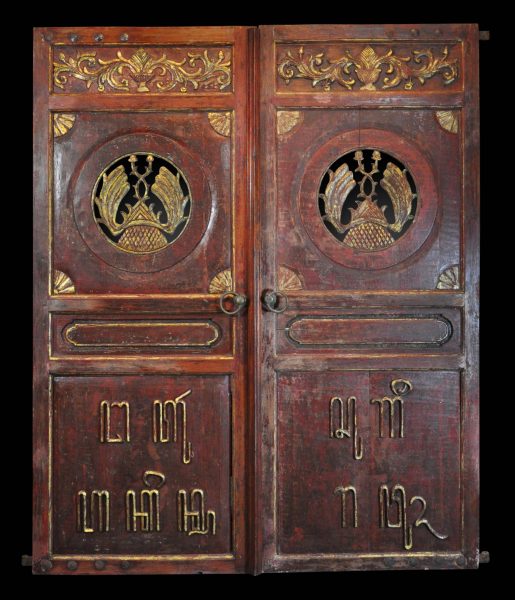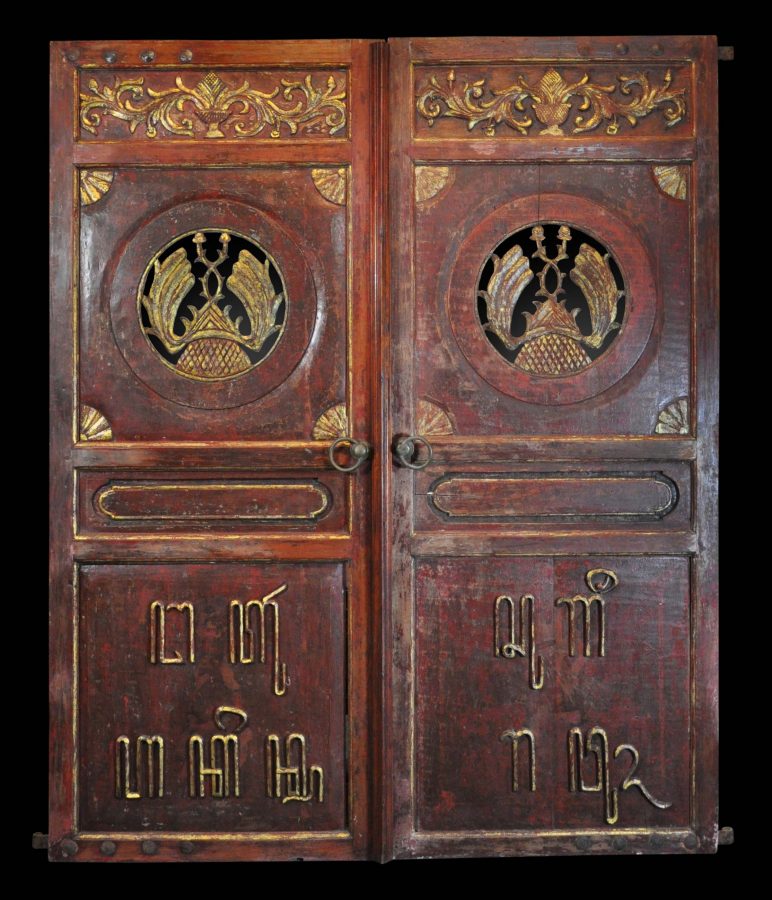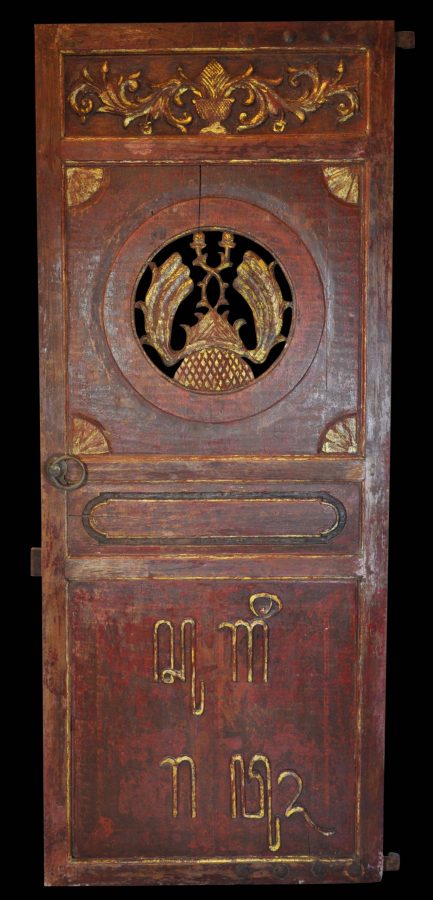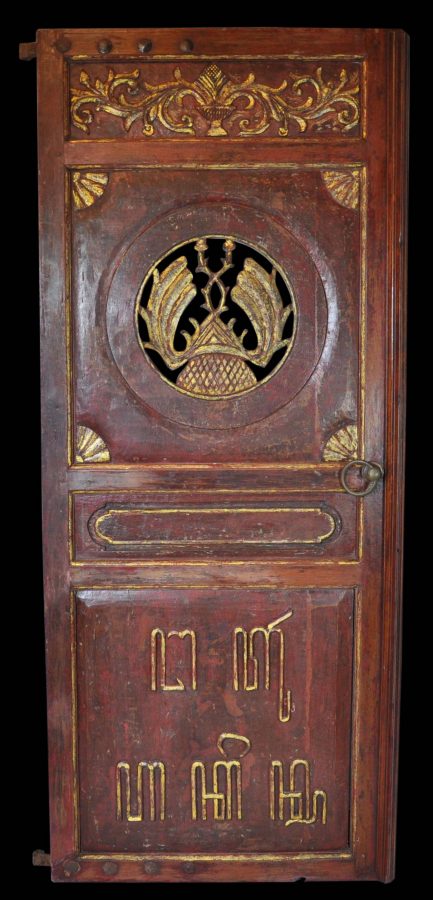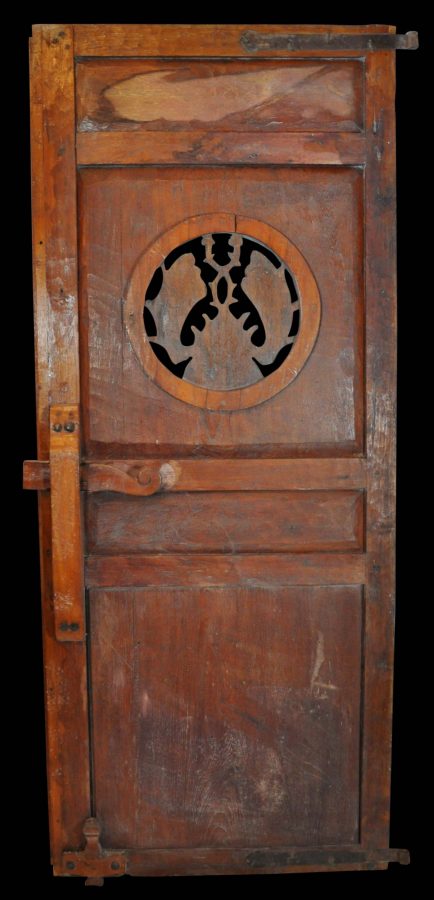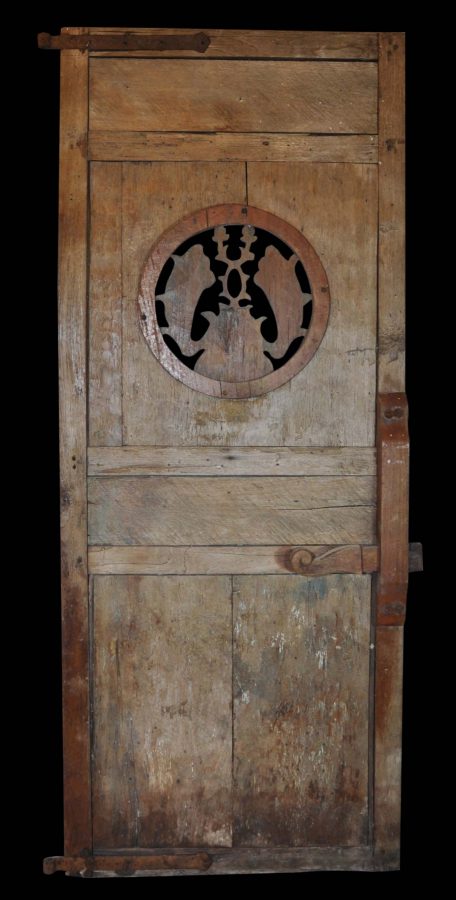This rare pair of doors would have been used in the combined home/business premises of a merchant in Java. Such doors are rarely seen nowadays.
Probably of teak, they have been lacquered in brown-red and decorated with gilded highlights, particularly over the applied, high relief carving. The decoration of the doors shows the Chinese influence that permeates much of Javanese, Sumatran and Balinese architecture, including court architecture, and this extends to the red and gold colour scheme which is reminiscent of that used in the furniture of the Straits and Peranakan Chinese of Java, Sumatra and the Malay Peninisula.
The upper panels have roundels with pierced carving designs that are evocative of a mountain motifs – possibly a reference to central Java’s most active volcano, Gunung Merapi, from which plumes of steam and smoke regularly can be seen. Each roundel is covered with a thin sheet of round glass thereby providing a window. Small, gilded fan-like motifs decorate each of the corners that surround each of these windows. A gilded carving of a rococo-like overflowing vase is above each of these,. no doubt an allusion to plenty and prosperity – an appropriate motif for the premises of a merchant.
Each of the lower panels has Javanese script in high relief applied carved wood. The inscriptions have been translated to read:
left panel:
Ngaturaken (Javanese) or Mengucapkan (in Indonesian) – ‘Wishing’ or ”Expressing’
and the right panel:
Sugeng rawah (Javanese) or Selamat datang (Indonesian) – ‘Welcome’.
The doors have iron fittings, and also there is a wooden sliding bolt locking mechanism. Both retain the original brass handles.
The doors are intact – there are no obvious losses. There is age-related discolouration and weathering to the lacquering and gilding, and the reverse of one door shows more weathering than the other. Overall, they are splendid and have wonderful patina and presence.
We do not know how they came to be in the UK. They seem to have been in the UK in storage a long time and there seemed to be no knowledge that they are Javanese. It is likely that they came during the age of steamship travel. The emergence of steam travel between Asia and Europe occurred around 1870. Steamships were bigger and faster and had much greater capacity to carry cargo. It is around this time onwards (until the advent of air passenger travel) that passengers suddenly were able to bring large items back to Europe collected on their travels. The opening of the Suez canal on 1869 further encouraged this trend which allowed travel by steamship to be faster and cheaper.
References
Baird, C., ‘Captain Thomson’s letter: A discussion on ‘China Trade’ furniture with particular reference to the port of Singapore’, Furniture History, Vol. 45, 2009.
Bennett, James (Art Gallery of South Australia), & Fajar Wijanarko (Museum Sonobudoyo, Java), pers. comm.
Mutholi’in, A., et al, Karaton Surakarta: A Look into the Court of Surakarta Hadiningrat, Central Java, Marshall Cavendish Editions, 2006.


